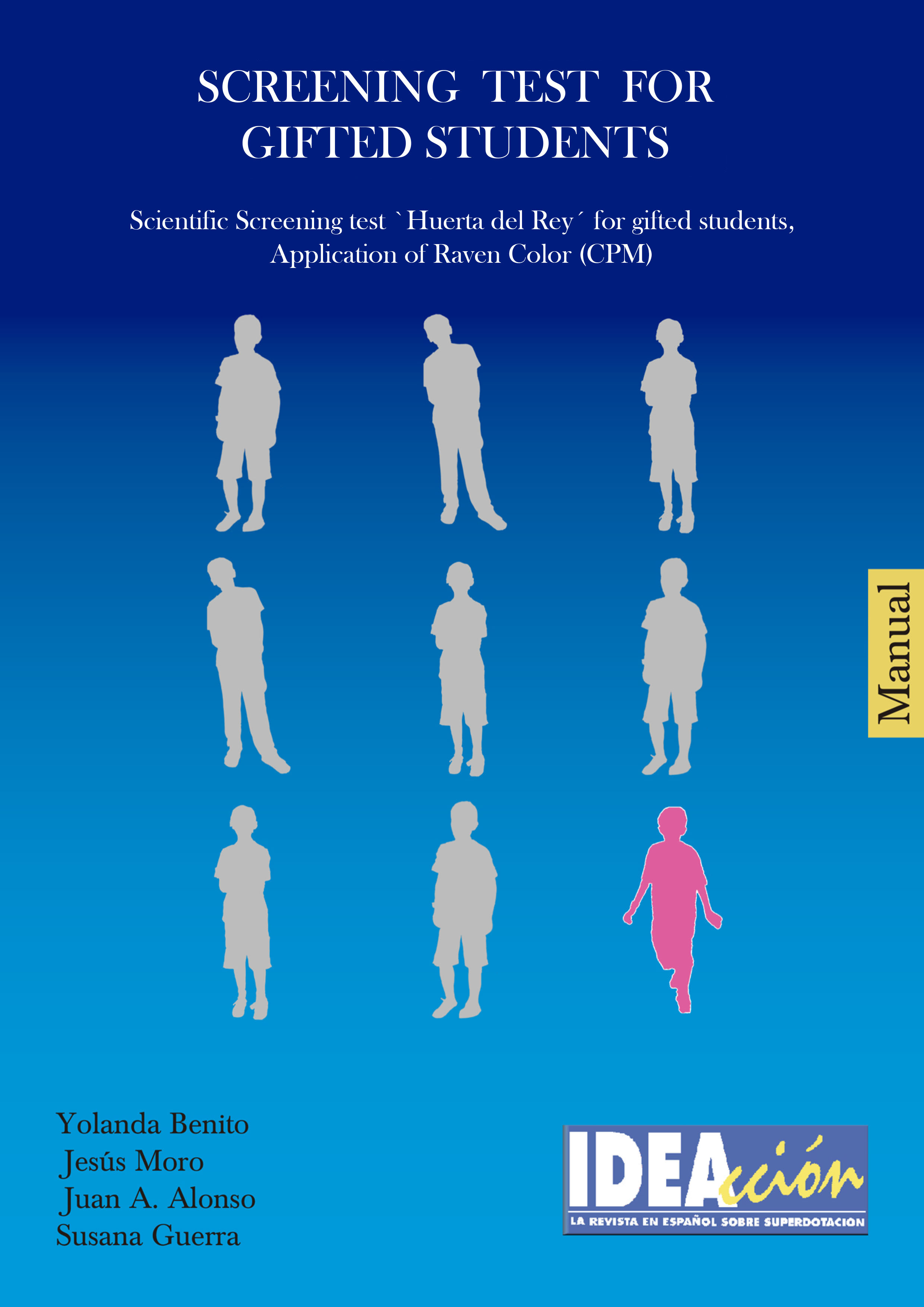IDEACCION, VOL. 33, ENGLISH 2015
SCREENING TEST FOR GIFTED STUDENTS
Consejo editorial de Ideacción:
Klaus K. Urban (Universidad de Hannover, Alemania)
Robert Sternberg (Universidad de Tufts, EEUU)
Janice Leroux (Universidad de Ottawa, Canadá)
Barbara Clark (Universidad del Estado de California, EEUU)
David George (Universidad de Northampton, Inglaterra)
Françoys Gagné (Universidad de Québec, Canadá)
Kurt Heller (Universidad de München, Alemania)
Christina Cupertino (Universidad Paulista, Brasil)
Franz J. Mönks (Universidad Radboud de Nijmegen, Holanda; ECHA)
Belle Wallace (Universidad de Natal, Sudáfrica)
Sally Reis y Joseph Renzulli (Universidad de Connecticut, EEUU)
Eunice Soriano Alencar (Universidad Católica de Brasilia, Brasil)
Jean Brunault (Ex-Presidente y Fundador de Eurotalent, Francia)
James R. Young (Universidad de Brigham Young, EEUU)
Carmen M. Cretu (Universidad de Iasi, Rumania)
Harry J. Milne (Universidad Griffith,Australia)
Ljiljana Miocinovic y Slavica Maksic (Institute for Educational Research Beograd,Serbia)
Krishna Maitra (Universidad de Delhi, India)
Mª Lourdes Saleiro Cardoso (Apepicta, Portugal)
Ivan Ferbezer (Center for High Education, Ptuj Eslovenia)
Editado por:
Centro Español de ayuda al desarrollo del superdotado «Huerta del Rey»
Pío del Río Hortega, 10
Valladolid 47014 (España)
email: juanaalonso@ceads.org
ABSTRACT
This screening test has led to significant advances in the identification and education of students with intellectual giftedness and has had impact in the educational legislation of the countries.
The aim of this new screening test is to extend the chance of detection of intellectually gifted students of ages 6, 7 and 8 years, especially students with fewer chances of being identified: ethnic minorities, social and culturally disadvantaged classes, children with learning difficulties, hearing difficulties, motor difficulties, and those who don’t know the language of the country.
The screening test that we expose below starts off the diagnosis and observation of gifted and non-gifted children for over 20 years. From the observation of the applied tests arose the possibility of developing a screening test for detecting students with intellectual giftedness.
The scientific screening Test ‘Huerta del Rey’ for gifted students, application of Raven Color (CPM) is intended for children ages 6, 7 and 8.
The criterion used for the prediction of intellectual giftedness in the field of the psychometric measure of intelligence was IQ (intelligence quotient) greater than or equal to 130 observed in a psychometric clinical test for intelligence measurement applied individually.
The scientific Screening Test for gifted students ‘Huerta del Rey’, application of Raven Color (CPM), offers the following scientific criteria of diagnostic validity:
-Sensitivity is 82’4% (Confidence interval 95%, located between the 72’52% and 92’28%). The Screening method allows identifying the 82’4% of children with intellectual giftedness.
-Specificity is 90% (Confidence interval 95%, located between 76’85% and 100%). Ability to detect children who really are gifted intellectually, as negative specificity is 90%.
It is a test free of cultural influences suitable for application on children of low social class, ethnic minorities, with hearing difficulties, learning difficulties, motor difficulties, language difficulties, or for those students who do not know the language of the country.


